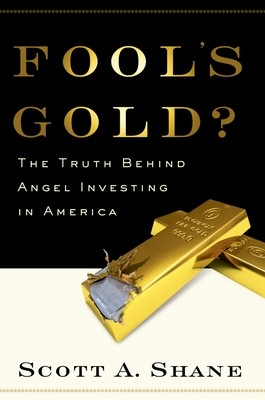
- We will send in 10–14 business days.
- Author: Scott Shane
- Publisher: Oxford University Press, USA
- ISBN-10: 0195331087
- ISBN-13: 9780195331080
- Format: 15.8 x 23.6 x 2 cm, kieti viršeliai
- Language: English
- SAVE -10% with code: EXTRA
Reviews
Description
The stereotype of the "angel investor" is a retired wealthy entrepreneur who sees potential, asks tough questions, takes a large stake, and in a few years makes a massive return in an IPO. This outsider fills the gap between the venture capitalist and the professional investor, swooping in with cash and expertise to bring dreams to fruition.
Unfortunately, Shane observes, this figure bears no relationship to reality. In Fool's Gold, he draws on hard data from the Federal Reserve and other sources to paint the first reliable group portrait of the lionized angel investors. Surprisingly, he finds that they are fewer, contribute less, and involve themselves in fewer start-ups than the conventional wisdom suggests. Most angels typically still have their day jobs, make investments of $10,000 or less, and take little or no role in assisting entrepreneurs build their companies. Few of the companies they put money into arrive at IPOs, let alone massive returns. But angels can play a critical role, he writes, if the fantasy is abandoned by all concerned. Drawing on his rich store of data, Shane offers recommendations to entrepreneurs and angels alike for the most productive use of angel investing, and suggests how policymakers can encourage it. Particularly promising are angel groups, which pool knowledge and money for wiser andmore productive investments. In groups, angels can rely on each other's expertise, share the labor of performing due diligence, and generally insure that their money is being placed--and used--wisely. Fostering the formation of such groups may be the single most important thing that government can do to boost angel investing. Massively researched and briskly written, Fools' Gold offers the first real resource on this misunderstood aspect of our entrepreneurial system.
EXTRA 10 % discount with code: EXTRA
The promotion ends in 22d.00:14:06
The discount code is valid when purchasing from 10 €. Discounts do not stack.
- Author: Scott Shane
- Publisher: Oxford University Press, USA
- ISBN-10: 0195331087
- ISBN-13: 9780195331080
- Format: 15.8 x 23.6 x 2 cm, kieti viršeliai
- Language: English English
The stereotype of the "angel investor" is a retired wealthy entrepreneur who sees potential, asks tough questions, takes a large stake, and in a few years makes a massive return in an IPO. This outsider fills the gap between the venture capitalist and the professional investor, swooping in with cash and expertise to bring dreams to fruition.
Unfortunately, Shane observes, this figure bears no relationship to reality. In Fool's Gold, he draws on hard data from the Federal Reserve and other sources to paint the first reliable group portrait of the lionized angel investors. Surprisingly, he finds that they are fewer, contribute less, and involve themselves in fewer start-ups than the conventional wisdom suggests. Most angels typically still have their day jobs, make investments of $10,000 or less, and take little or no role in assisting entrepreneurs build their companies. Few of the companies they put money into arrive at IPOs, let alone massive returns. But angels can play a critical role, he writes, if the fantasy is abandoned by all concerned. Drawing on his rich store of data, Shane offers recommendations to entrepreneurs and angels alike for the most productive use of angel investing, and suggests how policymakers can encourage it. Particularly promising are angel groups, which pool knowledge and money for wiser andmore productive investments. In groups, angels can rely on each other's expertise, share the labor of performing due diligence, and generally insure that their money is being placed--and used--wisely. Fostering the formation of such groups may be the single most important thing that government can do to boost angel investing. Massively researched and briskly written, Fools' Gold offers the first real resource on this misunderstood aspect of our entrepreneurial system.


Reviews